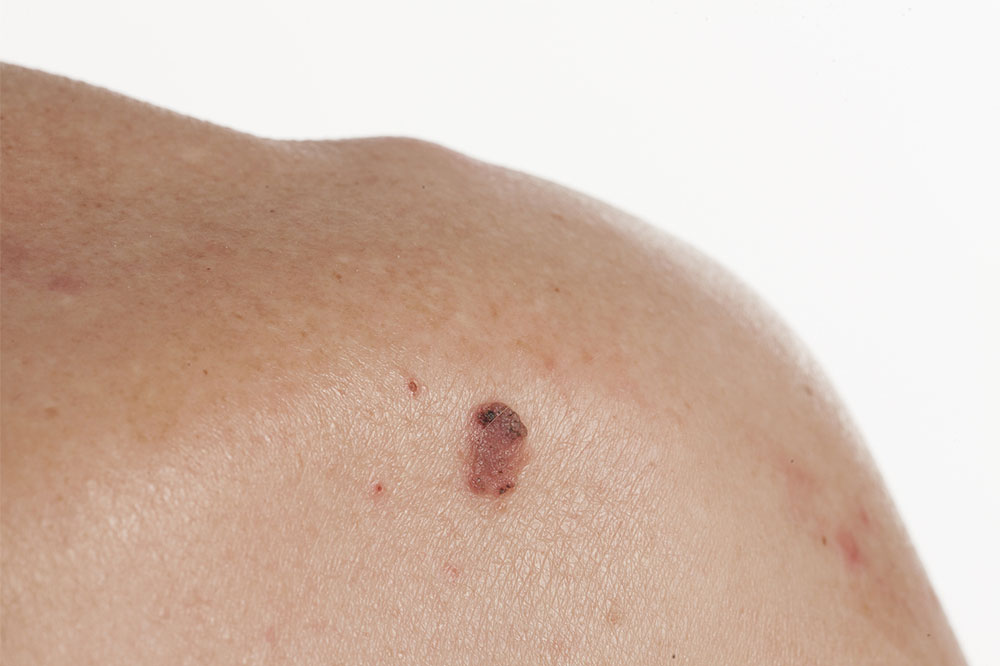Common Types of Carcinoma and Management Options
Carcinoma is the general term for a group of cancers that start or develop in the epithelial cells. These cells make up tissues of the skin and the lining of different organs. The condition can result from several factors, including age, poor lifestyle choices, and even sun exposure. Further, there are multiple types of the disease. However, basal cell carcinoma and squamous cell carcinoma affect the skin and are among the most common.

Basal cell carcinoma (BCC)
It develops in the deepest parts of the skin’s outer layer and is one of the most commonly diagnosed forms of skin cancer. It mainly affects those areas of the body that are overexposed to the sun, such as the head and the neck. The notable symptoms are:
Shiny skin-colored bumps that could bleed out and form scab tissue if left unchecked
Brown, black, or even blue lesions with raised bumps and translucent borders
Scaly patches that are usually flat with raised edges that continue to grow
White, waxy scars with visible lesions that have no defined borders
Squamous cell carcinoma (SCC)
It is another common form of skin cancer that can affect the face, ears, neck, lips, and the back of the hands when overexposed to UV rays. It can also develop in specific organs, such as the digestive or respiratory tract. But thankfully, squamous cell carcinoma treatments are effective if diagnosed and started early. The most common signs include:
Red nodules, characterized by firm growths of skin that may be hard to feel and touch
Open sores that bleed and form scaly crusts
New lesions around old scars or existing ulcers
Sores and wounds on the lips or inside the mouth
Raised warts that expand on the genitals or in the anal region
How are carcinomas categorized?
Not all types of carcinomas are aggressive. Health experts usually categorize them into three types based on the extent of their spread in the organ or affected area:
Carcinoma in situ
It indicates that the cancer cells have not spread out of the general regions where it was first diagnosed. Treatments for such cases can be minimally invasive, and chances of recovery are higher.
Invasive carcinoma
It indicates that cancer cells have begun to affect the local muscle and tissue around the primary growth. Surgical intervention is necessary to remove the affected tissue.
Metastatic carcinoma
It is when cancer spreads to distant body parts. In such cases, treatments include a combination of surgery and radiation therapy. In extreme cases, the affected organ may have to be removed.
How is carcinoma treated?
Doctors recommend a treatment plan depending on the severity of carcinoma symptoms. It may include oral treatments, topical ointments, and specific invasive and non-invasive procedures. The following are suggested squamous cell carcinoma and basal cell carcinoma treatment options:
Topical solutions
Certain creams and gels are applied to visible cancer sites on the skin to minimize the risk of scarring during treatment. In most cases, topical applications are used with suggested surgeries for better recovery. Doctors may also recommend oral treatments and immunotherapy that can be given intravenously to further manage the symptoms.
Electrosurgery
The doctor first scrapes off the visible tumor scales from the skin. Then a heat and chemical agent destroys the remaining cancer cells and prevents bleeding. Statistics indicate electrosurgery has the highest cure rates when done correctly for smaller BCC and SCC lesions. However, it must be repeated multiple times for the best results.
Mohs surgery
In this procedure, doctors make multiple incisions to extract tumor cells till there are no signs of the disease. Mohs surgery is among the most effective techniques for treating BCC and SCC lesions, and it can be used for larger aggressive tumors.
Excisional surgery
It is recommended for smaller lesions on the skin. Surgeons determine a safety margin and remove only the affected portion. They monitor the progress and perform the surgery once again at a future date if the lesions continue to grow after the first round of treatment.
Radiation therapy
Radiation therapy is among the best non-invasive treatments for patients who cannot undergo surgery. Using targeted low-energy X-ray beams, surgeons destroy the tumor cells over multiple scheduled appointments. In severe cases, radiation therapy may be used after surgery to improve the chances of recovery.
Cryosurgery
Instead of lasers, surgeons freeze the tumor cells and surgically remove them from the affected site. However, this technique is only effective for superficial wounds that affect the topmost skin layer. Patients with bleeding problems and anesthesia intolerance can opt for this minimally invasive procedure.
Photodynamic therapy
This is an alternative treatment option for superficial cancer scarring and lesions. In this procedure, doctors infuse light-sensitive topical agents into the tumor to make the cells vulnerable to blue light. Depending on the situation, they may use pulsed-dye lasers to destroy smaller lesions.


